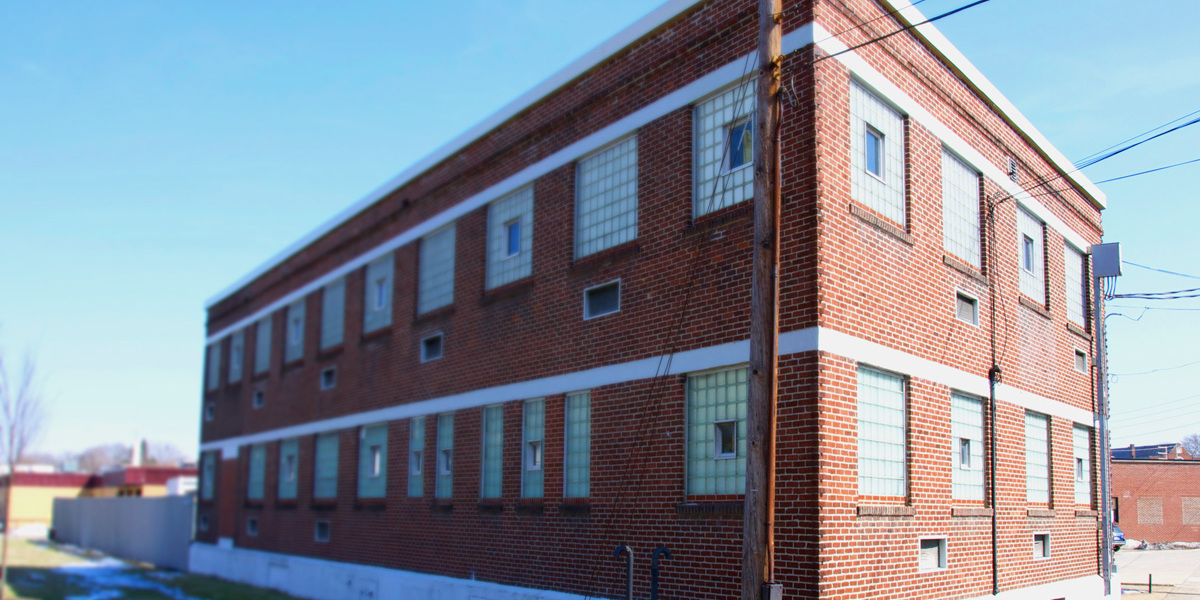
Former Oil Distribution Center Brownfield
Allentown School District
The Allentown School District’s (ASD) Media Center was located on a property previously owned and operated by the Gulf Oil Company. The Gulf Oil Company used the property as a bulk oil distribution center from at least 1932 until the late 1960s. The district’s plan to demolish the existing structure and repave a portion of the site for maintenance vehicles allowed for the implementation of a passive remediation strategy. Before the project commenced, the District contracted Element Environmental Solutions (E2S) to perform environmental due diligence activities to determine what regulatory actions, if any, must be taken prior to redevelopment of the site. A comprehensive site evaluation was necessary due to the structure’s age and its former use. E2S’s team of environmental professionals worked together to address any hazardous materials located within the structure as well beneath the ground surface.
The hazardous materials investigation included asbestos containing materials (ACM), lead-based paint, and PCB/Mercury materials in the building’s interior and on the exterior. Upon completion of the field investigation, E2S prepared a final report documenting the locations of hazardous materials, quantities of hazardous materials, and cost estimates for abatement of identified hazardous materials. Asbestos was detected in samples collected from the floor tiles and the mastic adhesive holding the tile in place. Exterior caulk and glazing of the windows also contained asbestos, but this material was soft and pliable, meaning it was not friable. EPA/DEP regulations allow certain non-friable materials to be left in place for demolition, as long as demolition methods do not render the materials friable by the EPA’s definition. The floor tile and mastic were scheduled for asbestos abatement, since there was likelihood that the floor tile could be rendered friable during demolition, and also so the mastic adhesive was removed from the substrate to allow recycling as an option versus disposal. E2S worked closely with the District to prepare technical specifications for the safe removal of asbestos containing materials during the demolition of the structure.
E2S managed the bidding process, including hosting the pre-bid meeting, preparing bid specs, and reviewing contractor contracts. E2S also provided contractor oversight prior to the building’s demolition to ensure the save removal of the ACM. This typically includes indoor air quality (IAQ) monitoring both inside and outside the work area during the abatement of the ACM. A total of 6,560 square foot of ACM was removed and disposed of properly during the abatement. Upon completion a visual inspection of the work was conducted, as was clearance sampling to confirm that the work area was cleared for re-occupancy.
During the initial hazardous materials investigation, goose-neck vent pipes of an unknown origin were identified, spurring E2S to launch a geophysics investigation in addition to our proposed soil boring investigation. Historical documentation was also reviewed to confirm the history and use of the site. The geophysics investigation associated the vent pipes to a natural gas line underneath the sidewalk adjacent to the site, not underground storage tanks (USTs).
The soil boring investigation include the installation of over twentyfive soils borings both inside and outside the structure and three soil samples collected from test pits. Field screening led us to believe that the analytical results would be unfavorable, but laboratory analysis revealed that the site was relatively clean given its historical uses. The photoionization detector (PID), a tool used to screen for volatile organic compounds (VOCs) in the field detected VOCs in the thousands, however, many of the constituents’ sampled for were not identified above detectable concentrations. This project reinforced the idea that field instrument data has not yet replaced laboratory analytical data. Even though the site had been used as a bulk oil facility for over thirty years, the facility had been used for administrative purposes since the 1970s. The volatile organic compounds (VOCs) associated with any release of petroleum product into the site’s soils had broken down over the years. Limited contamination was encountered directly beneath the former hydraulic pumping room located in the structure’s basement. Contamination was not encountered at the soil bedrock interface; therefore, a groundwater investigation was not necessary.
The most cost effective remedy was to leave the impacted soils in place beneath the proposed parking lot to prevent leaching or movement of the contamination. It was determined that a vapor intrusion investigation was necessary since the impacted soils were located within a one-hundred foot radius of the district’s supply warehouse. The site was managed under the PaDEP’s Land Recycling Program (Act 2), receiving a Release of Environmental Liability under the Act 2 Site Specific Standard.